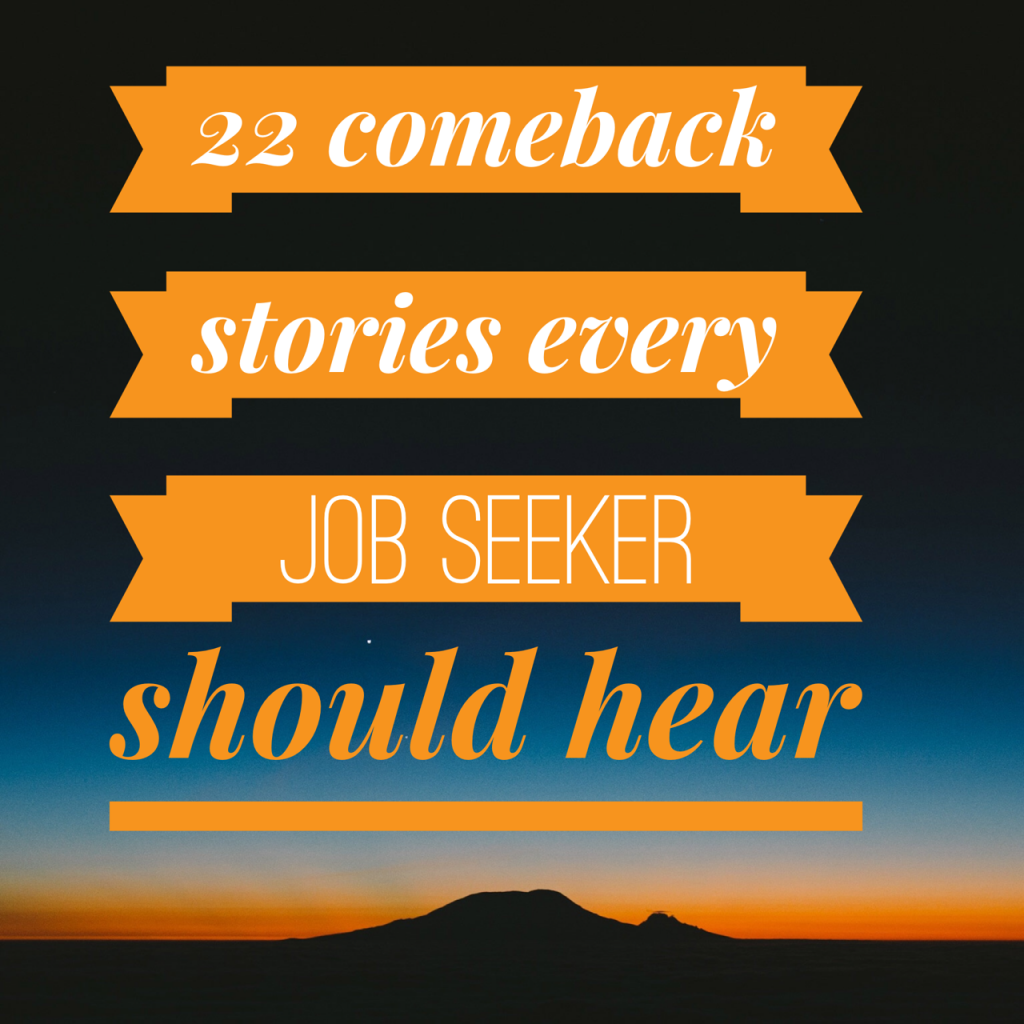4 Steps for Getting Gigs (Landing Freelance Work)
After nearly four years of full-time freelancing, I’ve learned a trick or two about how to keep my family fed without having a traditional, full-time job. In my humble opinion, there are really four main areas of concern when it comes to getting work as a freelancer:
- landing the work
- scheduling the work
- completing the work
- and finally, getting paid for the work.
The last three areas are really not an issue if the first one’s not happening (i.e. landing the work), so I thought I would share a bit of what I’ve discovered about how to do just this, especially when it seems that there’s no work to be had.
Step 1: Establish and Foster Relationships
Everyone has unique gifts and abilities, and let me tell you, this (self-promotion) IS NOT one of mine. If it were up to me, I’d live in a cave somewhere in the mountains and never interact with people. Sadly, however, we don’t always get what we want in life. Regardless, if you want to get work as a freelancer, this is square one, and you must start here: you have to foster relationships with folks who one day might employ you.

Every successful freelancer does this a little differently: some host stunningly successful livestreams while others work Facebook like a social media mogul. Some people can play Twitter like an electronic virtuoso or make Instagram simply sing, while others are more “old school” in their approach to fostering relationships and operate best in face-to-face scenarios. For me, I prefer email for establishing and fostering relationships.
It doesn’t much matter what method you use to create and maintain relationships, but it does matter that you do it.
The reason for this is quite simple, actually, but its something that many folks don’t know or choose to ignore: people do business with people.

It’s true – you do it, I do it, and just about everyone else in the world does, too. Think about it: if you wanted to build a deck on your house and you had to choose between a friend who has some solid carpentry skills or a complete stranger, whom would you pick? Unless there existed some other, mitigating circumstances, I’d be willing to bet that you (like me) would select your pal.
As such, when you’re looking to increase your total number of overall opportunities to get work, the more people you know, the larger your total pool of possibilities. Now, am I saying that you have to be BFF’s with everyone on the Internet? Certainly not! Doing so would be neither safe, possible, nor particularly recommended. However, what it does mean is that the more solid business relationships you establish and foster, the more solid prospects you have when you go looking for your next gig.
Step 2: Listen for Opportunities, Offer to Help
Whereas Step 1 is tough for me, Step 2 (Offering to Help) comes perfectly naturally. This part actually happens while you are performing Step 1, that is, while you are talking with people and learning more about what they are doing and what they have going on in their lives. It requires is two things: first, a firm understanding of the types of things you are proficient at doing, and second, the willingness to find a need and fill a need. What does that mean, exactly? Consider the following example.
I would not be writing this article today if I had not done this Step. I’ll make no bones about it: I am getting paid to write this and the only reason that I am and you’re not is because while I was corresponding back and forth with Anne (the owner of this website), I was also reading between the lines. I had read her website (obviously) and understood that she was back to working a full time job. Even though she never actually came out and said she was busy, I could tell from the overall tone of her emailed responses, and the fact that she occasionally mentioned having lots of other things to do but was not making as much headway as she would like, that she was a very busy lady. So, I asked what I could do to help.

This led to a whole series of little jobs that I discovered I could do for her – and that she was willing to pay me to do. It just so happened that several of the things she needed done were right in my wheelhouse: writing, editing, doing layout for print products, and so on, and I was able to capitalize on that. It could just as easily have been that she needed help with some chemical equations or splitting some atoms in her garage (things that I’m not any good at) but because I had asked a door opened to some possible work, and I was able to build relationship with Anne throughout the entire process.
Also – and this is an important side-note – if I personally could not do the work but happened to know someone who could, I could refer them to Anne. This would help both Anne and my friend, and I would build a greater relationship with both of them in the process.
So, long story short: Step 2 is all about listening to people and offering to help where and when you can. Don’t be pushy. Just be natural.
Step 3: Give a Little to Get a Little
Before we even get out of the gate on this one, please know that it comes with a big, fat warning: DO NOT GIVE ALL YOUR WORK AWAY FOR NOTHING! I am a huge proponent for assigning a fair value to your work (heck, that could be a separate article all its own, honestly) and would never tell you to give your hard work away for nothing. I do not advise anyone to devalue their work, but I do realize that occasionally, you have to provide samples to prospective clients so they can see a “proof” of the type of work of which you are capable.
A portfolio site is a great way to display all this information: maybe the types of videos you’re good at making, or the types of documents you’ve edited in the past, but creating this portfolio site requires some “loss leader” work that no one’s going to pay you for. However, you need to bear in mind that this sort of work will pay off in the long run. Maybe you don’t have any past work that you can point to, or maybe everything you’ve done in the past is “company confidential” that you cannot display on the public web. If that’s the case, then you might need to show your potential client a little of what you can do: perhaps taking a run at editing a sample document – not much, just a page or so; or maybe a concept sketch for the cover they’re looking to hire out. These sorts of “give a little, get a little” scenarios can really help you stand out from the crowd.
Again, I caution you: this Step must be managed judiciously. I’ve seen lots of freelancers get taken to the cleaners giving away free work. It’s imperative to know and maintain healthy boundaries. Always remember that your time and your skills are worth something, and they are yours to manage. If you decide to give some work away, then it had better be worth it over the long haul.

Step 4: Go Above And Beyond
This last Step is critical for keeping the work coming in, but requires that you actually have some work. Step Four is: do more than is asked of you. I’m not talking about giving away the farm here, I’m talking about doing common sense things, the things that you would want someone to do for you if you were the client. For example:
Maybe you’ve landed an editing job, and you know that the final word count matters to the customer. They’ve decided to send you the work in batches because they’re trying to combine lots of smaller products into one larger product, but they know that they MUST hit that 120,000-word mark for the final product.
Well, your job is “just” to edit, right? Sure, but wouldn’t it be handy if you also kept a list of the final, edited word count of each of the smaller products as you edit them? Sounds handy to me, and it really didn’t cost you a lot of time or effort. What if you also kept a running total for the final, larger product, too? The customer didn’t ask you to do it, but it would sure make their life easier in the long run.
You might not believe it, but folks remember things like that. Believe me when I tell you that it will be those sorts of little “added bonuses” to your already high standard of work that will keep the client coming back over and over. Repeat work is good, right? Right.
Two final words of warning on this Step: first, it is possible to go too far above and too far beyond here, so tread carefully. For instance, if you decided to design a web application that automatically tracks and tallies all of the word counts of any set of products placed into the app – that might be a bit much in this instance. Remember: these are the common sense; straightforward things that you would want someone to do for you if you were paying them. The second warning here is if you are being paid hourly, then you should absolutely not do this until you are given permission. This is because everything you do takes some small measure of time, and if the customer is paying specifically for that time, then you should not add additional tasks to the work your client has already given you. This could be seen as “padding the bill,” and you DO NOT want to do that. In this case, if you have ideas for enhancements, then run them by your client first to get approval.
In closing, I hope that some of what I’ve presented here helps you. This is certainly not meant to be an exhaustive list; I’m sure there are lots of other great tips and tricks for landing work in the freelance market, but these are ones that I’ve seen work time and time again. There’s an old saying in my family: the cheapest lesson you can learn is one someone else has already paid for. In this case, I’ve already footed the bill on these lessons, so enjoy.
Brannon Hollingsworth was born to create. The co-author of H20 the novel, his recent works include the comic “Sundered” (for Awful Good Games), “Tenet’s Tale,” part of the mosaic novel Skein of Shadows from Dark Quest Publishing; and “Firestarter,” part of The Guestbook, an Amazon best-selling horror anthology from Four Fools Press. Last, but not least, Robot Dad, which is his first foray into fully illustrated children’s’ books.
